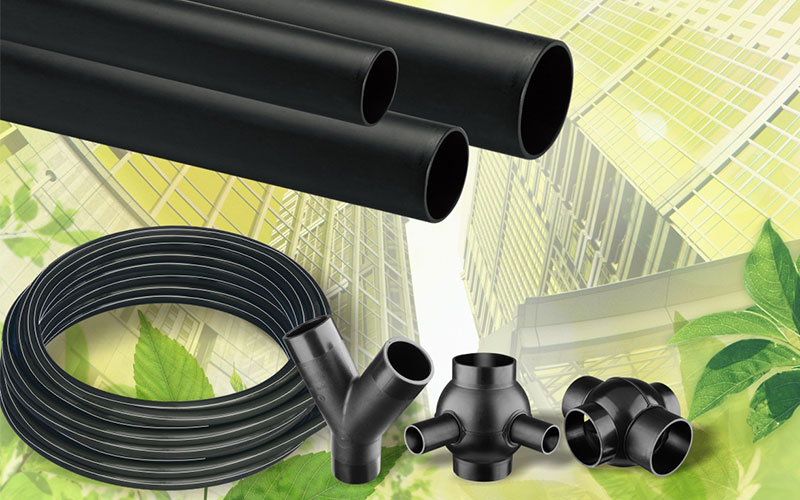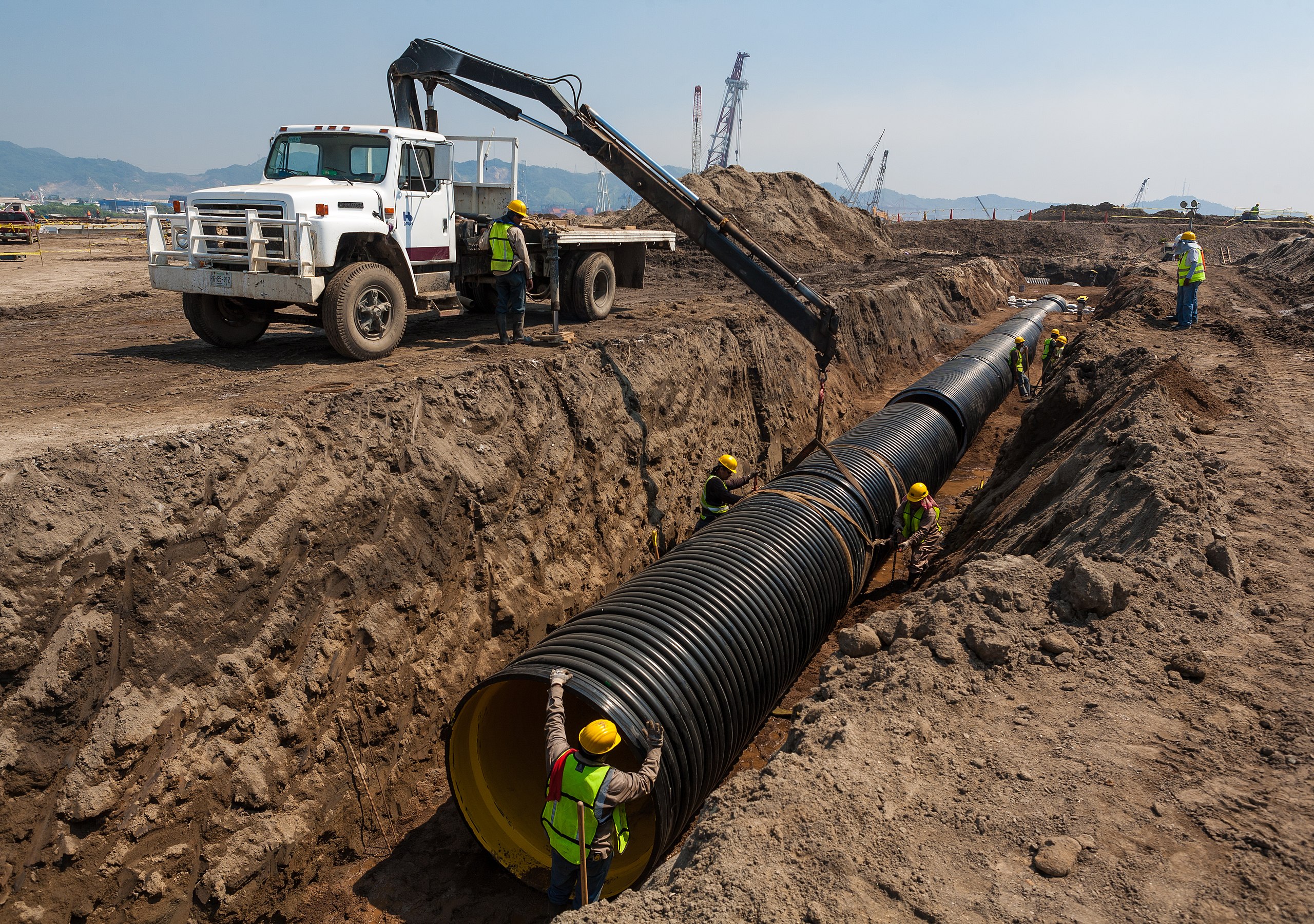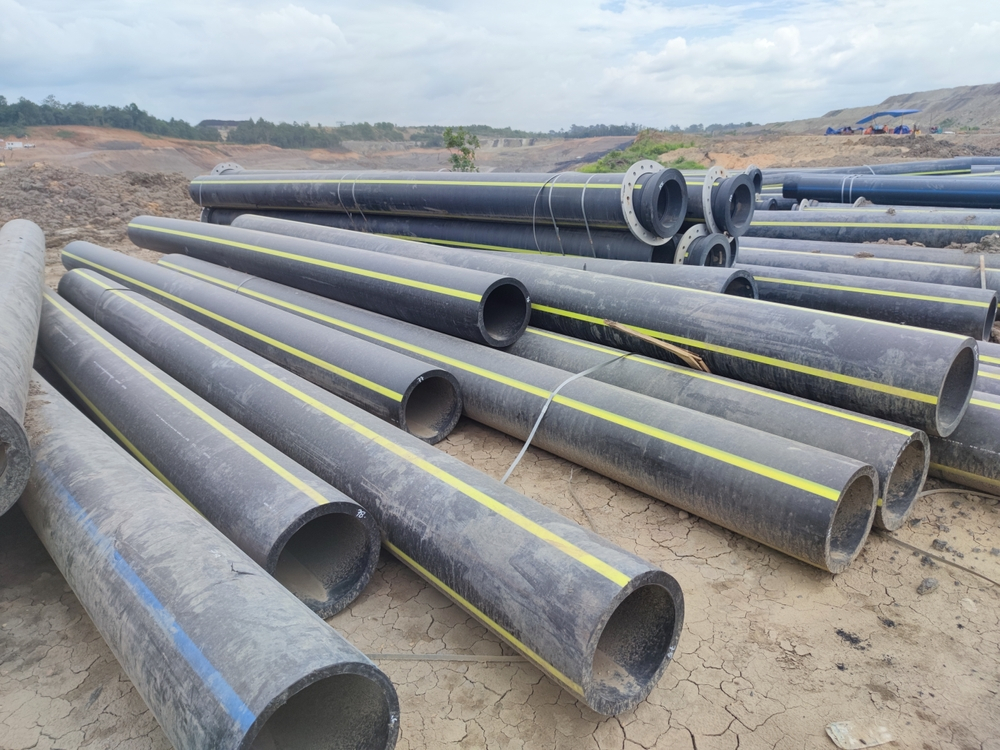Why Partnering with Pipe Supplier American Plastics Midland Ensures Trusted Solutions
Wiki Article
Explore the Manufacturing Process Behind High-Quality HDPE Pipe and Its Applications
The production process of high-grade HDPE pipelines is elaborate and systematic. It begins with the option of resources that improve performance. Following this, ethylene goes through polymerization to create resin, which is after that shaped via extrusion. Quality assurance is extremely important, ensuring that the end product fulfills rigid standards. The journey of HDPE pipelines doesn't finish with manufacturing. Their applications throughout various markets expose a wider importance worth checking out.Recognizing HDPE: Qualities and Advantages

High-density polyethylene (HDPE) is a flexible polycarbonate understood for its resilience and resistance to different environmental aspects. This material shows excellent tensile toughness, making it suitable for demanding applications. Its low-density framework adds to a light-weight product, facilitating convenience of managing and setup. HDPE likewise showcases remarkable resistance to chemicals, which minimizes degradation when revealed to rough substances.
The product's reduced dampness absorption further enhances its long life, making it suitable for use in pipelines and tank. Furthermore, HDPE is resistant to ultraviolet (UV) radiation, ensuring that items keep their integrity also when subjected to sunshine. Moreover, its versatility enables the production of intricate shapes without endangering stamina. The eco-friendly nature of HDPE, usually acquired from recycled materials, contributes to its charm, advertising lasting practices in manufacturing. Overall, these properties and benefits make HDPE a recommended choice for various industrial and customer applications.
Resources Choice for HDPE Production
The selection of resources for HDPE production is important to verify the end product fulfills the preferred requirements and top quality criteria. High-density polyethylene (HDPE) is largely generated from polymerized ethylene, acquired from nonrenewable fuel sources such as gas or crude oil. The top quality of these feedstocks greatly influences the mechanical and thermal properties of the final HDPE.Ingredients likewise play a significant role in improving HDPE's efficiency, consisting of anti-oxidants, UV stabilizers, and colorants, which enhance resilience and resistance to environmental elements. The selection procedure have to think about not only the chemical make-up of the raw products yet additionally their processing qualities to ensure efficient production.
Additionally, the sourcing of basic materials must prioritize sustainability and compliance with ecological guidelines, as responsible techniques are imperative in today's market. Ultimately, careful resources choice lays the structure for producing premium HDPE pipes ideal for varied applications.
The Extrusion Process: Shaping HDPE Pipe
The extrusion procedure plays an essential function in forming HDPE pipelines, beginning with precise product preparation techniques that guarantee perfect circulation and consistency. Similarly crucial is the design of the die, which straight influences the final measurements and surface top quality of the pipe. With each other, these aspects add substantially to the efficiency and quality of HDPE pipeline production.Material Preparation Methods
Reliable manufacturing of HDPE pipes starts with thorough product preparation strategies, particularly the extrusion process. Throughout this stage, high-density polyethylene material is first dried out to remove dampness, guaranteeing suitable circulation attributes. The material is after that fed into the extruder, where it undergoes heating and melting, changing right into a viscous state. This heating process is very carefully controlled to keep the product's integrity and performance. The liquified HDPE is required via a die, shaping it into a constant pipe kind. Appropriate temperature monitoring throughout extrusion is necessary, as it straight influences the material's properties and the final product top quality. Once formed, the HDPE pipeline is cooled down and reduced to specified sizes, all set for succeeding processing and applications.Die Style Value
Accuracy in die style plays a crucial function in the extrusion procedure of HDPE pipes. The die serves as the final shaping tool, straight affecting the pipe's dimensions, wall surface density, and surface finish. A properly designed die warranties consistent product flow, decreasing flaws such as abnormalities and weak points. The geometry of the die have to be enhanced to suit the specific buildings of HDPE, including its thickness and thermal behavior throughout extrusion. Furthermore, the cooling rate of the product as it passes through the die can markedly influence the pipe's architectural honesty. Spending in advanced die modern technology is essential for suppliers aiming to create high-grade HDPE pipelines that meet market criteria and consumer expectations.Quality Assurance Procedures in HDPE Production
Although numerous variables influence the top quality of HDPE pipe look these up production, reliable quality assurance steps are essential to guarantee uniformity and reliability in the last item. Key high quality control methods include rigorous product inspection, confirming that the raw polyethylene meets recognized requirements for pureness and thickness. During the extrusion procedure, specifications such as temperature, pressure, and cooling time are very closely kept an eye on to preserve dimensional accuracy and architectural integrityOn top of that, post-production screening is crucial; producers usually carry out hydrostatic tests to evaluate the pipe's stamina and resistance to pressure. Aesthetic inspections for surface area issues additionally boost quality control. Accreditation from relevant requirements organizations, like ASTM or ISO, gives an additional layer of reliability. By carrying out these complete quality control measures, makers can lessen flaws, boost performance, hose pipe attachments and ensure that the HDPE pipelines satisfy the certain needs of various applications, inevitably causing client fulfillment and trust in the item.
Applications of HDPE Pipe Across Industries
HDPE pipelines are utilized throughout various industries due to their durability and convenience. In water distribution systems, they assure reliable shipment, while in wastewater monitoring, they give dependable solutions for waste transport. In addition, farming irrigation networks take advantage of HDPE's resistance to deterioration and adaptability, making it an excellent option for modern-day farming practices.
Water Distribution Systems
A significant variety of industries depend on high-density polyethylene (HDPE) pipes for effective water circulation systems. Known for their durability and resistance to deterioration, HDPE pipelines are commonly utilized in community water supply networks, agricultural watering, and industrial applications. Their lightweight nature helps with very easy handling and installment, minimizing labor prices and time. Additionally, HDPE pipelines can suit various stress degrees, making them appropriate for both low and high-pressure systems. hdpe pipe in stock Midland TX. The adaptability of the material enables for smooth integration right into existing facilities, lessening the need for considerable excavation. HDPE's resistance to chemical leaching warranties that the water supplied stays safe and tidy, making it a suitable choice for keeping the high quality of potable water throughout various fields.Wastewater Management Solutions
Reliable water distribution systems likewise lead the way for innovative wastewater monitoring options, where high-density polyethylene (HDPE) pipelines play a considerable role. Renowned for their toughness and resistance to corrosion, HDPE pipes are ideal for moving wastewater in various settings. Their versatility permits very easy installation in complicated environments, reducing the demand for considerable excavation. Additionally, HDPE's smooth interior surface area reduces rubbing, boosting flow rates and effectiveness. These pipes are likewise immune to chemical leaching, making certain that impurities do not jeopardize the surrounding setting. Industries, municipalities, and treatment facilities significantly rely upon HDPE pipes for their reliability and long life, making them a favored choice for modern-day wastewater administration systems. This versatility emphasizes the critical value of HDPE pipelines throughout countless applications.Agricultural Watering Networks
Agricultural watering networks profit substantially from using high-density polyethylene (HDPE) pipes, which provide efficient and reputable water delivery to crops. HDPE pipes are light-weight, making them simple to carry and mount, while their versatility permits various configurations in varied terrains. These pipes show superb resistance to corrosion, chemicals, and UV radiation, making sure longevity in extreme agricultural environments. Furthermore, their smooth indoor surface minimizes rubbing loss, enhancing water circulation and minimizing energy prices linked with pumping. The longevity of HDPE pipelines, commonly surpassing half a century, contributes to decrease maintenance and substitute costs. Farmers increasingly count on HDPE pipes to improve watering performance and promote lasting farming methods, inevitably leading to boosted crop returns and source preservation.
Future Patterns in HDPE Pipe Innovation
As the need for lasting and effective infrastructure grows, developments in HDPE pipe technology are positioned to change various industries. Emerging trends consist of the combination of wise innovations, such as sensing units and IoT capabilities, which help with real-time monitoring of pipeline problems, lowering maintenance prices and protecting against leaks. In addition, the growth of sophisticated production techniques, such as 3D check these guys out printing, is making it possible for the production of complicated, customized pipeline designs that provide to certain task demands.The focus on recycling and circular economy techniques is driving the innovation of HDPE pipes made from recycled materials, enhancing sustainability. Enhanced jointing techniques, such as electro-fusion and mechanical installations, are also boosting installation efficiency and dependability. The expanding emphasis on ecological policies is pushing producers to adopt greener manufacturing procedures, making certain that HDPE pipes not only meet sector criteria yet also cultivate a more lasting future for infrastructure growth.
Often Asked Concerns
How Does HDPE Compare to Various Other Plastic Materials?
HDPE exceeds several other plastic products pertaining to sturdiness, chemical resistance, and versatility. Its low density and high tensile toughness make it suitable for various applications, frequently surpassing choices in both efficiency and long life.What Are the Environmental Effects of HDPE Manufacturing?
The ecological effects of HDPE manufacturing include greenhouse gas emissions, power intake, and potential pollution from manufacturing procedures. In addition, inappropriate disposal can cause dirt and water contamination, raising problems concerning lasting ecological results.Can HDPE Pipes Be Reused?
Yes, HDPE pipelines can be reused. Many centers approve utilized HDPE for handling, changing it into new items. This reusing adds to sustainability efforts, minimizing plastic waste while saving sources and energy in the manufacturing cycle.What Is the Lifespan of HDPE Water Lines?

Just How Do Temperature Level Variations Impact HDPE Pipe Efficiency?
Temperature level variants considerably impact HDPE pipe efficiency, affecting adaptability and toughness. High temperatures can cause softening, while reduced temperatures may cause brittleness, ultimately affecting the pipeline's sturdiness and viability for numerous applications in diverse environments.Report this wiki page